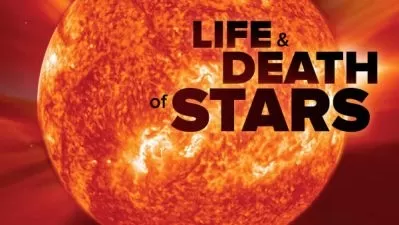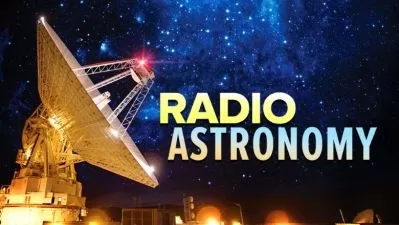Understanding the Universe: An Introduction to Astronomy, 2nd Edition
Alex Filippenko
49:53:04
Description
This visually rich course is designed to provide a nontechnical description of modern astronomy, including the structure and evolution of planets, stars, galaxies, and the Universe as a whole. It includes almost all of the material in my first two astronomy courses for The Teaching Company, produced in 1998 and 2003, but with a large number of new images, diagrams, and animations. The discoveries reported in the 2003 course are integrated throughout these new lectures, and more recent findings (through mid-2006) are included, as well. Much has happened in astronomy during the past few years; we will discuss the most exciting and important advances.
Astronomical objects have been explored with breathtaking data obtained by the Hubble Space Telescope, the Chandra X-Ray Observatory, the Keck 10-meter telescopes, planetary probes, and other modern instruments. We will explore amazing phenomena, such as quasars, exploding stars, neutron stars, and black holes, and we will see how they increase our understanding of the physical principles of nature. We will also investigate recent newsworthy topics, such as the Cassini mission to Saturn, evidence for liquid water on ancient Mars, the discovery of many small bodies beyond Neptune in our Solar System, the detection of numerous planets around other stars, the nonzero mass of ghostly neutrinos, enormously powerful gamma-ray bursts, the conclusive evidence for a supermassive black hole in the center of our Milky Way Galaxy, the determination of the age of the Universe, the discovery of a long-range repulsive effect accelerating the expansion of the Universe, and progress in the unification of nature’s fundamental forces. Scientifically reasonable speculations regarding the birth of the Universe, the possibility of multiple universes, and the probability of extraterrestrial life are also included.
This course concentrates on the most exciting aspects of our fantastic Universe and on the methods astronomers have used to develop an understanding of it. The lectures present, in clear and simple terms, explanations of how the Universe “works,” as well as the interrelationships among its components. Reliance on basic mathematics and physics is minimal but appropriate in some sections to deepen the interested viewer’s quantitative understanding of the material.
The course is divided into three major sections, each of which consists of several units. (These major sections are called “parts” during the lectures, but they are not to be confused with the eight 12-lecture “parts” used in packaging the lectures.)
There are 24 lectures in Section 1, entitled “Observing the Heavens.” The first unit, “Celestial Sights for Everyone,” describes simple daytime and nighttime observations that you can make to better appreciate the sky and what it contains. Various commonly observed phenomena, such as seasons, lunar phases, and eclipses, are also discussed. The second unit, “The Early History of Astronomy,” covers the study of astronomy from the ancient Greeks through Newton, including the transition from geocentric (Earth-centered) to heliocentric (Sun-centered) models of the Universe. In the third unit, “Basic Concepts and Tools,” we provide an overview of distance and time scales in the Universe to put our discussions in perspective. Because the study of light is of central importance to astronomy, we spend several lectures explaining its physical nature and utility. Modern telescopes, the main instruments used by astronomers, are also described.
Section 2, “The Contents of the Universe,” consists of 46 lectures in 5 units. In the first unit, “Our Solar System,” we discuss the major constituents of our own planetary system, including the Sun, planets and their moons, comets, asteroids, and Kuiper-belt objects. The discovery of a distant body larger than Pluto and the subsequent, highly controversial demotion of Pluto from planetary status made headlines worldwide. The formation of other stars and planetary systems, as well as the discovery of such extrasolar planets, is the subject of the second unit, “Other Planetary Systems.” During the past decade, about 200 planets have been found orbiting other stars, making this one of the most exciting areas of modern astronomy. The search for extraterrestrial life is also described.
In the third unit of Section 2, “Stars and Their Lives,” we learn about the properties of other stars and the various observations needed to deduce them. Nuclear reactions, the source of energy from the stars, are described, as well. We examine how stars eventually become red giants, subsequently shedding their outer layers to end up as dense white dwarfs, retired stars. The explosive fates of some rare types of stars are the subject of the fourth unit, “Stellar Explosions and Black Holes,” and we explain how the heavy elements necessary for life are created. Bizarre stellar remnants include neutron stars and black holes, the realm of Einstein’s general theory of relativity. We continue our exploration of black holes with such phenomena as black-hole evaporation and powerful gamma-ray bursts, as well as speculations that black holes are gateways to other universes. In the fifth unit, “The Milky Way and Other Galaxies,” we extend our explorations to the giant collections of stars called galaxies, along the way examining evidence for mysterious dark matter.
Section 3, “Cosmology: The Universe as a Whole,” comprises the final 26 lectures of the course in 3 units. The first unit, “Cosmic Expansion and Distant Galaxies,” introduces the expansion of the Universe and shows how it is used to study the evolution of galaxies. We discuss active galaxies and quasars, in which matter is inferred to be falling into a central, supermassive black hole. In the second unit, “The Structure and Evolution of the Universe,” aspects of the Universe, such as its age, geometry, and possible fate, are considered. We examine evidence for the stunning conclusion that the expansion of the Universe is currently accelerating. We also describe the cosmic microwave background radiation—the generally uniform afterglow of the Big Bang—as well as the tiny irregularities that reveal the presence of early density variations from which all of the large-scale structure of the Universe subsequently formed. The nature of dark energy accelerating the Universe is explored in terms of modern attempts to unify forces, such as string theory.
In the third and final unit, “The Birth of the Cosmos, and Other Frontiers,” we examine the very early history of the Universe, showing how the lightest elements formed during a phase of primordial nucleosynthesis. The recognition of several troubling problems with the standard Big Bang theory led to a magnificent refinement—an inflationary epoch of expansion that lasted only a tiny fraction of a second. The possible connection between inflation and the currently accelerating expansion of space is also discussed. We then consider very speculative ideas regarding the birth of the Universe and the hypothesis of multiple universes. We end, in the last lecture, on a philosophical note, with some reflections on intelligent life in the cosmos and of our place in the grand scheme of things.
More details
User Reviews
Rating
Alex Filippenko
Instructor's CoursesDr. Alex Filippenko is Professor of Astronomy and the Richard and Rhoda Goldman Distinguished Professor in the Physical Sciences at the University of California, Berkeley. He earned his B.A. in Physics from the University of California, Santa Barbara, and his Ph.D. in Astronomy from the California Institute of Technology.
Dr. Filippenko's research accomplishments, documented in more than 500 scientific publications and 600 abstracts and astronomical circulars, are among the most highly cited in the world. Science magazine credited two international teams of astronomers (on which he was the only coauthor contributing to both teams) with the top "Science Breakthrough of 1998" for research on exploding stars (supernovae), which shows that the universe is expanding at an accelerating rate, propelled by mysterious "dark energy." Professor Filippenko received a share of the 2007 Gruber Cosmology Prize for this discovery, work that went on to receive the 2011 Nobel Prize in Physics. Professor Filippenko also leads the world's most successful robotic search for exploding stars.
Dr. Filippenko was elected in 2009 to the National Academy of Sciences, one of the highest honors accorded to a U.S. scientist. He has also been recognized with several major awards, including the 2010 Richard H. Emmons Award for excellence in the teaching of college-level introductory astronomy for non-science majors from the Astronomical Society of the Pacific, the 2007 Richtmyer Memorial Award of the American Association of Physics Teachers, the 1997 Robert M. Petrie Prize of the Canadian Astronomical Society, and the 1992 Newton Lacy Pierce Prize of the American Astronomical Society. He was a Guggenheim Fellow in 2001 and a Phi Beta Kappa Visiting Scholar in 2002.
In 2006, he was honored nationally as the "Outstanding Doctoral and Research Universities Professor of the Year" by the Carnegie Foundation for the Advancement of Teaching and the Council for Advancement and Support of Education.
At UC Berkeley, Dr. Filippenko's teaching awards include the Donald S. Noyce Prize for Excellence in Undergraduate Teaching in the Physical Sciences and the Distinguished Teaching Award. He was also voted the Best Professor on Campus nine times in student polls.
Dr. Filippenko is coauthor of The Cosmos: Astronomy in the New Millennium, now in its 4th edition (2013), and winner of the 2001 Texty Excellence Award for best new textbook in the physical sciences. He has played a prominent role in numerous television documentaries, including about 40 episodes spanning six seasons of The Universe on The History Channel.

The Great Courses
View courses The Great Courses- language english
- Training sessions 97
- duration 49:53:04
- English subtitles has
- Release Date 2023/06/06

















